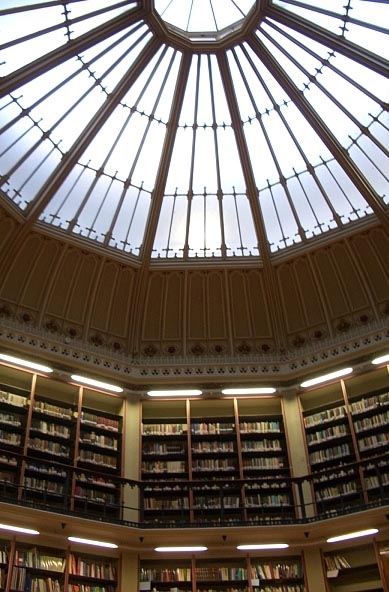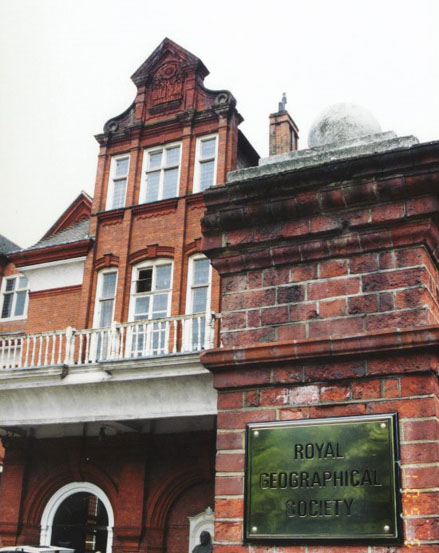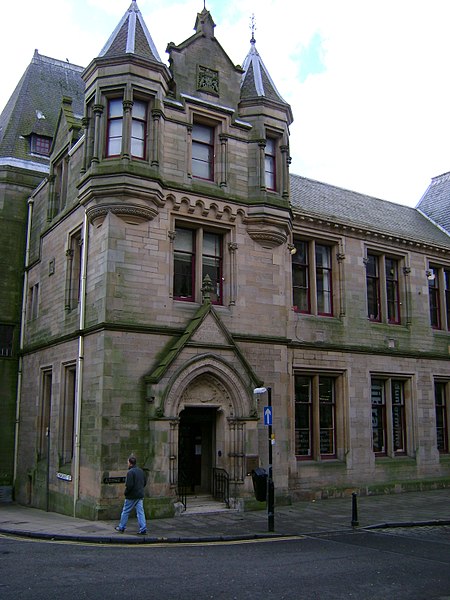 |
| from http://www.victorianweb.org/art/architecture/london/121g.html |
Jade's Adventure in the UK
This is a reflective journal about the sites visited during July 2010 in the UK.
Wednesday, September 1, 2010
Maughan Library - July 29 2010
Royal Geographic Society - July 27, 2010
 |
| from http://www.galenfrysinger.com/royal_geographic_society.htm |
The National Archives of Scotland - July 20, 2010
 |
| from 1087_18_2---National-Archives-of-Scotland--Edinburgh_web.jpg |
After the morning in Dunfirmline, we returned to Edinburgh and had a tour of the National Archives of Scotland. They are known as the Keeper of the Records of Scotland. There are so many records that there are actually 3 buildings that make up the National Archives. There are 2 main divisions, record services and corporate services. Their record keeping has records from about the 12th century to today. Much of the current building we tour this day was dedicated to the Scottish People Center where people from around the world come to research their family history. Much of general family history records have been digitized. Patrons can order, pay for and print pictures and certain documents at home. Although there are 8 websites for the different departments of the archives, there are links and references to which patrons can be directed to for the correct one. This was an impressively, purpose built building as well.
Dunfermline Public Library - July 20, 2010
 |
| http://en.wikipedia.org/wiki/File:Carnegie_Library,_Dunfermline.jpg#file |
Central Library of Edinburgh - July 19 2010
 |
| photo from http://www.edinburgh-scotland.net/galleryEHnewtown1.htm |
Thursday, July 29, 2010
National Library of Scotland - July 19 2010
Our LondonAway trip was to Edinburgh, Scotland. We stayed in the suburb of Dalkeith and bussed into the city. Our first trip was to the National Library of Scotland. They are the largest library in Scotland and major research library in Europe with 14 million printed items and 100,000 manuscripts. They house 2 million maps and atlases, 300,000 music scores, 32,000 film and video, and 25,000 of magazines and newspapers. The library has items in 490 different languages and grows with 6000 new items every week. They specialize in Scotland's knowledge, history and culture. They are the legal deposit of Scotland and don't lend out books; reference only. The collection is vast and available to anyone who wishes to consult them. The reader's tickets are for special collections, rare materials and for licensed digital resources. Users don't need a ticket to use the map rooms. Much of their catalog is online and an interesting database that they have is called Scots Abroad. This is further subdivided into Scots in North America, Emigrants guide to North America, Australia and New Zealand and Emigration Correspondence. Their digital archive is in beta form and the Scottish Screen Archive is created with the Heritage Lottery Fund. Users can view 1000 flim clips and moving imagaes online. Not all of that archive is professional works, but amatuer work preserving the life of ordinary citizens and the Gaelic language.
Picture from National Library of Scotland
Picture from National Library of Scotland
Saturday, July 17, 2010
Bodlien Library at Oxford University
After stopping to see Paddington Bear at Paddington Station, we hopped onto a very overcrowded train to Oxford. The whole town was one big scenic historic place and the University of Oxford seemed to have buildings everywhere. We started our tour in the Humphrey's Library which is now a research reading room. They house "Western Medieval and early-Modern manuscripts, pre-1641, special and rare book collections, codicology, bibliography and local history. The Library is composed of three major portions; the original medieval section (completed 1487, rededicated 1602), the Arts End (1612) to the east, and Selden End (1637) to the west. Duke Humfrey’s Library contains both open and closed access collections and is home to the octavo, quarto and folio volumes of the old Theology (Th.) and Art (Art.) classifications." (http://www.bodleian.ox.ac.uk/bodley/library/rooms/dh) . The library originally started with 20 books and by donations and gifts from Duke Humphrey, the library began to grow. When scholars went to use the library, they had to use it during the day since there was no artificial light in the building and no candles because of fire. Therefore there was no heat either. After the reformation, Thomas Bodley offered money to help refurbish and rebuild the library. It was the first time that bookshelves and chairs were introduced to the library. Formerly there were only standing tables. Although books were still chained to the shelves, readers can at least sit down to read them. Books were numbered on the page side not the spine because of the chains that held them in place and a list at the end of each shelf would tell you what it was. Since 1610, the library has been a copyright library and has grown by 3-4 thousand books a week. Now they only receive 6% of every book published beginning with M as the British library takes the majority and distributes among the other 6 copyright libraries in the country. Nowadays there are no chains on the books in the library but the shelves are alarmed. When they took off the chains, there was about 8 tons of metal. The books are only removed to be cleaned once every 10 years. This applies across the board into the underground stores and preservation areas. There is a ventilation system that keeps enough air circulating and dry so the books don't mold. After an additional building was built, tunnels and a vacuum request system was built to link the buildings. Although the vacuum system is no longer used anymore the pipes are still there. The tunnels have been retrofitted with a conveyor system to carry the bins between the library buildings and reading rooms.
The first round building in the UK was the Radcliffe Library building, now named Radcliffe Camera. John Radcliffe was the personal physician to Queen Anne. He left money specifically to build a science library with his name on it. Later on he did give the library over to Oxford University and they retained his name to the building. Oxford use it mainly as a reading room since it had gas light built in and allowed its scholars to read in the dark which was not possible in the old library. We couldn't see the treasure room of the Bodlien since they are under construction. They house first edition copies of C.S. Lewis and J.R.R. Tolkien books! At last count, there is approximately 19 million books, the largest of university libraries in the world. We also got to look at the Divinity School where now graduation of doctoral students procession thru. It was formerly used as a lecture hall for Oxford and an exam hall. The exams used to be oral and student and dons (professors) would debate back and forth until it was satisfactory enough. The longest was about 3 days long. Today only doctoral students have their exams orally to defend their thesis. Oxford is a beautiful blend of old and new. Hollywood believes it to be as Harry Potter films have been film inside many of its buildings and grounds.
photos from bodleian.ox.ac.uk
The first round building in the UK was the Radcliffe Library building, now named Radcliffe Camera. John Radcliffe was the personal physician to Queen Anne. He left money specifically to build a science library with his name on it. Later on he did give the library over to Oxford University and they retained his name to the building. Oxford use it mainly as a reading room since it had gas light built in and allowed its scholars to read in the dark which was not possible in the old library. We couldn't see the treasure room of the Bodlien since they are under construction. They house first edition copies of C.S. Lewis and J.R.R. Tolkien books! At last count, there is approximately 19 million books, the largest of university libraries in the world. We also got to look at the Divinity School where now graduation of doctoral students procession thru. It was formerly used as a lecture hall for Oxford and an exam hall. The exams used to be oral and student and dons (professors) would debate back and forth until it was satisfactory enough. The longest was about 3 days long. Today only doctoral students have their exams orally to defend their thesis. Oxford is a beautiful blend of old and new. Hollywood believes it to be as Harry Potter films have been film inside many of its buildings and grounds.
photos from bodleian.ox.ac.uk
Subscribe to:
Posts (Atom)


